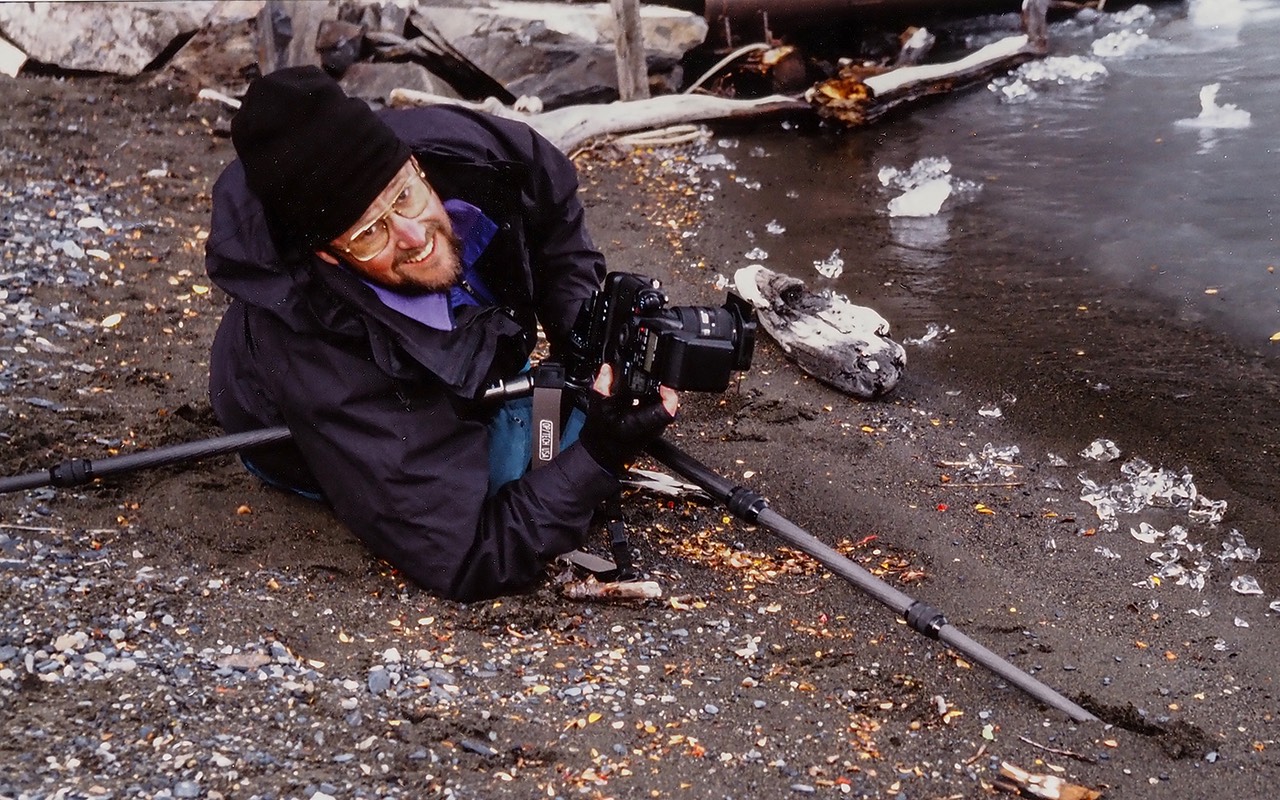
I really can’t stay
(But, baby it’s cold outside)
I want to photograph today
(But, baby it’s cold outside)
My camera is dead
(I’ll give you a charge)
So nicely said
(But it might not last)
Baby, it’s cold
Baby, it’s cold…out…side
Here in the US I heard a local meteorologist say not once, but twice, that we’re encountering a "cold air mass dropping down from Siberia this week". Darn those Russians. Trying to disrupt America once again ;~).
It doesn’t make any difference where they came from, if you’re headed outdoors this week in the US, you probably are encountering very cold temps.
Nikon tends to publish the temperature range of their cameras as 32-104°F (0-40°C). This is Nikon’s legal department basically passing on the range given to them by Nikon’s parts suppliers. The image sensor, EXPEED processor, LCD panels, and even the mechanical shutters all seem to have the same specifications. Probably because that’s the range the suppliers test them in.
Can you photograph if it’s lower or higher in temperature?
Probably.
The “probably” comes from a variety of things. Let’s tackle the Big Three for working in the cold:
Battery. Lithium Ion batteries don’t lose charge in cold, but they increase in resistance as their temperature drops. The camera’s battery charge level indicator isn’t exactly a measure of actual voltage stored in the battery, it’s more like a guess based upon how much "power flow” the camera is seeing.
Resistance increase looks like a lower power level to the camera, basically. And cameras are set to shut down when they think the power level is low enough that data might be lost in the middle of collecting and writing it. Putting a battery low in charge into the camera means you won’t have much power time, as the low power plus resistance will quickly put it over the bar (or is it under the bar?).
Solution: It’s not really a complete solution, but (1) keep two fully charged batteries in an inner pocket of your coat to keep them warm; (2) don’t put a battery in the camera until you’re ready to photograph; (3) swap batteries, as necessary, as power levels start showing low. When each battery warms up again in your coat, its resistance will drop, rendering it useful again.
This works very well with the Z9 and it’s large capacity EN-EL18D battery. It works less well with the Z5/Z6/Z7 and their moderate capacity EN-EL15C battery. It works poorly with the Z30/Z50/Zfc and their mediocre capacity EN-EL25 battery.
LCDs. The camera displays—and to a lessor degree, the semiconductors in the camera—will first slow as they get cold, and eventually lag or freeze completely as they get really cold. This is a problem for mirrorless cameras, which don’t have an optical viewfinder; the EVF in a Z System camera is going to slow the colder it gets. Eventually, it will slow enough to be useless.
Solution: Again, not a complete solution, but consider keeper the camera warmer. Some cold-weather photographers carry hand warming packs with them, and will use them on the camera as well as their hands (works better if you have covered the camera with a rain cover and put the warmer inside that). B&H sells the Ruggard DSLR Parka, which I use in very cold sideline situations, partly to keep my hands warm while controlling the camera (even with thin gloves on), partly to keep the camera from absorbing all the cold.
Condensation. Another specification you’ll see in the manuals is <85% humidity. Some cameras have built in humidity detectors and will shut down if humidity inside the camera exceeds a certain value (you don’t want electronics coming in contact with water while powered).
You usually have condensation issues long before the internal humidity of the camera exceeds 85%, so with cold weather the big issue is avoiding the big inside/outside temperature swing that will produce such a problem.
Many of us working in cold temperatures (or temperature extremes) leave our cameras outside. Of course, that might cause the displays to get too cold, which complicates the issue. In winter, I don’t run the heat in my vehicle when carrying camera gear to a photo session. Heck, in the Galapagos last month, we shut down the air conditioners in the lounge where we left our gear, for sort of the same reason in the other direction.
Solution: The best condensation avoidance is to remove all air from the device before moving between warm/cold extremes. The usual way to do that is the old “baggie solution.” Put your camera and lens in a zipper lock bag and remove as much air as you can as you seal the bag. Give some time after closing the bag in one temp before moving it, and give it some more time before opening it in the new temp. More time and little air = no condensation.
As for me, I’m spending these cold days inside trying to catch up with writing projects. I’m not a fool. Not only does the camera get cold in these extreme conditions, but so do I. Baby, it’s cold outside!
